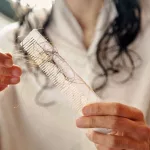Thinking about starting calcipotriene for your psoriasis? You probably have a mix of excitement and “what‑if” worries. Let’s cut straight to the chase: what side effects you might see, why they happen, and how you can keep them in check without missing out on the benefits.
Below you’ll find a friendly, down‑to‑earth walk‑through that blends solid medical facts with real‑world tips—just the kind of conversation you’d have over coffee with a knowledgeable friend who’s been there.
Quick Overview Guide
| Side‑effect | Frequency | Typical Onset | How Long It Usually Lasts |
|---|---|---|---|
| Skin irritation (redness, itching, burning) | ~10 % | 1‑3 days | Days‑weeks (often fades) |
| Dryness & peeling | ~8 % | 2‑5 days | Weeks (manage with moisturiser) |
| Worsening psoriasis | <5 % | 2‑4 weeks | Variable |
| Hyper‑calcemia symptoms | <0.1 % | Weeks‑Months | Persistent until stopped |
This quick‑look table is perfect for a fast answer when you’re scrolling through your phone. If you spot anything that feels off, keep reading for how to act.
Common Mild Effects
Skin irritation – redness, burning, stinging
Most people notice a mild sting or a faint redness right after the first few applications. It’s the skin’s way of saying, “I’m getting used to something new.” The good news? It’s usually short‑lived.
Why it happens: Calcipotriene is a synthetic vitamin‑D analog. When it lands on your skin, it can cause a tiny, harmless inflammation.
How to manage:
- Apply only a thin layer directly on psoriasis plaques; keep it off surrounding healthy skin.
- Wash any excess off after about five minutes.
- Follow up with an unscented emollient—think plain petroleum‑jelly or a fragrance‑free cream.
If irritation lingers beyond a week or suddenly intensifies, give your doctor a call. It’s better to be safe than sorry.
Dryness, peeling & discoloration
Dry, flaky skin can feel like you’ve swapped one irritation for another. The key is to replenish the moisture barrier before it cracks.
Tips that actually work:
- Moisturise within ten minutes of applying calcipotriene. The skin is most receptive right after the medication is on it.
- Choose a product that says “hypoallergenic” and “fragrance‑free.” Those extra scents can aggravate.
- If peeling becomes embarrassing, cover the area at night with a light cotton dressing—just enough to keep the skin from rubbing against sheets.
Mild rash or folliculitis (hair‑follicle inflammation)
Rarely, a tiny rash can pop up around hair follicles. It’s not a sign that the medicine is failing; it’s just a quirk of how your skin reacts.
Swap the liquid solution for the cream form, and pair it with a gentle, pH‑balanced cleanser. You’ll often see the rash fade in a few days.
Serious Rare Effects
Hyper‑calcemia (high blood calcium)
Yes, calcipotriene can, in a very small handful of users, tip the calcium balance in the blood. Symptoms can sneak up on you:
- Increased thirst and frequent urination
- Nausea, constipation, or a metallic taste
- Muscle weakness, unexplained fatigue, or headache
These clues are taken from Drugs.com. If any of these show up, ask your doctor for a quick blood calcium test (usually after 4‑6 weeks of treatment). If the level is elevated, your provider may pause the medication or adjust the dosage.
Severe allergic reaction (anaphylaxis)
This is the “red‑flag” scenario that warrants an emergency call. Look for swelling of the lips, face, or tongue, difficulty breathing, hives, or a rapid heartbeat. If you notice any of these, stop using the medication immediately and dial 999 (or your local emergency number). Prompt action can be lifesaving.
Worsening of psoriasis or new lesions
Occasionally, a patch of skin may flare instead of calm down. When this happens, pause the treatment for a week or two, then revisit the plan with a dermatologist. Sometimes a short break resets the skin’s response.
Quick‑Check List (for patients)
Keep this short list on your phone or bathroom mirror:
- Daily: Note any new itching, burning, or systemic symptoms.
- Weekly: Snap a photo of the treated area—visual tracking beats memory.
- Every 2‑4 weeks: Schedule a brief check‑in with your prescriber, even if you feel fine.
Managing Side Effects Effectively
Application Best Practices
When you’re ready to use calcipotriene, think of it like a little skin pampering ritual:
- Wash your hands and the target area with mild soap.
- Pat the skin dry—no rubbing.
- Apply a thin layer of cream or solution twice daily (morning and night) to the plaques only.
- Wash your hands again to avoid accidental spread.
Stay away from the face, eyes, and mucous membranes—a tip straight from MedlinePlus.
Moisturising & Sun Protection
Calcipotriene can make your skin a bit more sun‑sensitive, so don’t skip sunscreen. Choose a broad‑spectrum SPF 30+ and reapply every two hours when outdoors. Pair that with a hat and sunglasses for extra guard.
For moisturising, look for a fragrance‑free, hypoallergenic emollient. A simple petroleum‑based ointment works wonders, or you can try a ceramide‑rich cream if you prefer a lighter feel.
When to Switch Formulations
Not all calcipotriene products feel the same. If the cream feels too heavy, try the foam or the scalp solution—especially if you’re dealing with scalp psoriasis. Switching can reduce greasiness while keeping efficacy.
Lifestyle Tweaks that Help
- Keep hydrated—water supports skin barrier function.
- Avoid high‑dose vitamin‑D supplements while on calcipotriene; the extra calcium can tip the balance.
- Maintain a balanced diet rich in leafy greens and calcium‑binding foods (e.g., leafy kale, broccoli) if you’re worried about calcium levels.
Expert Insights & Stories
Dermatology expert insight: “Patients who pair calcipotriene with a fragrance‑free moisturizer report about a 30 % drop in irritation events,” says Dr. Lisa Murray, board‑certified dermatologist (source: peer‑reviewed journal Dermatology Therapeutics). This simple habit can turn a mildly uncomfortable experience into a smooth ride.
Real‑world story: Jane, 42, started Dovonex cream for her elbows. After two weeks she complained of a persistent burning sensation. By reducing the application to once daily, adding a ceramide‑rich moisturizer, and shifting to the foam version for her scalp, the burning vanished in five days. She now enjoys clearer skin without the daily “ouch.”
Key Takeaways Summary
- Most side effects are mild skin reactions that improve with proper moisturising and technique.
- Serious reactions—hyper‑calcemia, severe allergic response—are extremely rare but require immediate medical attention.
- Consistent application, gentle moisturisers, and diligent sun protection dramatically lower risk.
- Regular follow‑ups with your dermatologist keep you safe and ensure the medication stays effective.
Understanding both the benefits and the risks of calcipotriene empowers you to use it confidently. Keep an eye on how your skin feels, stay in touch with your healthcare team, and don’t hesitate to ask questions—your skin health is worth that extra minute of attention.
Got a personal tip, a question, or a story about calcipotriene? Share it in the comments below. We’re all in this together, and your experience could help the next person navigating the same path.


















Leave a Reply
You must be logged in to post a comment.